Shilpa Gupta at the Barbican: social injustice, censorship and poetry
In the multipart show ‘Sun at Night’ at London’s Barbican, Mumbai-based artist Shilpa Gupta highlights the fragility of free expression and gives a voice to those silenced
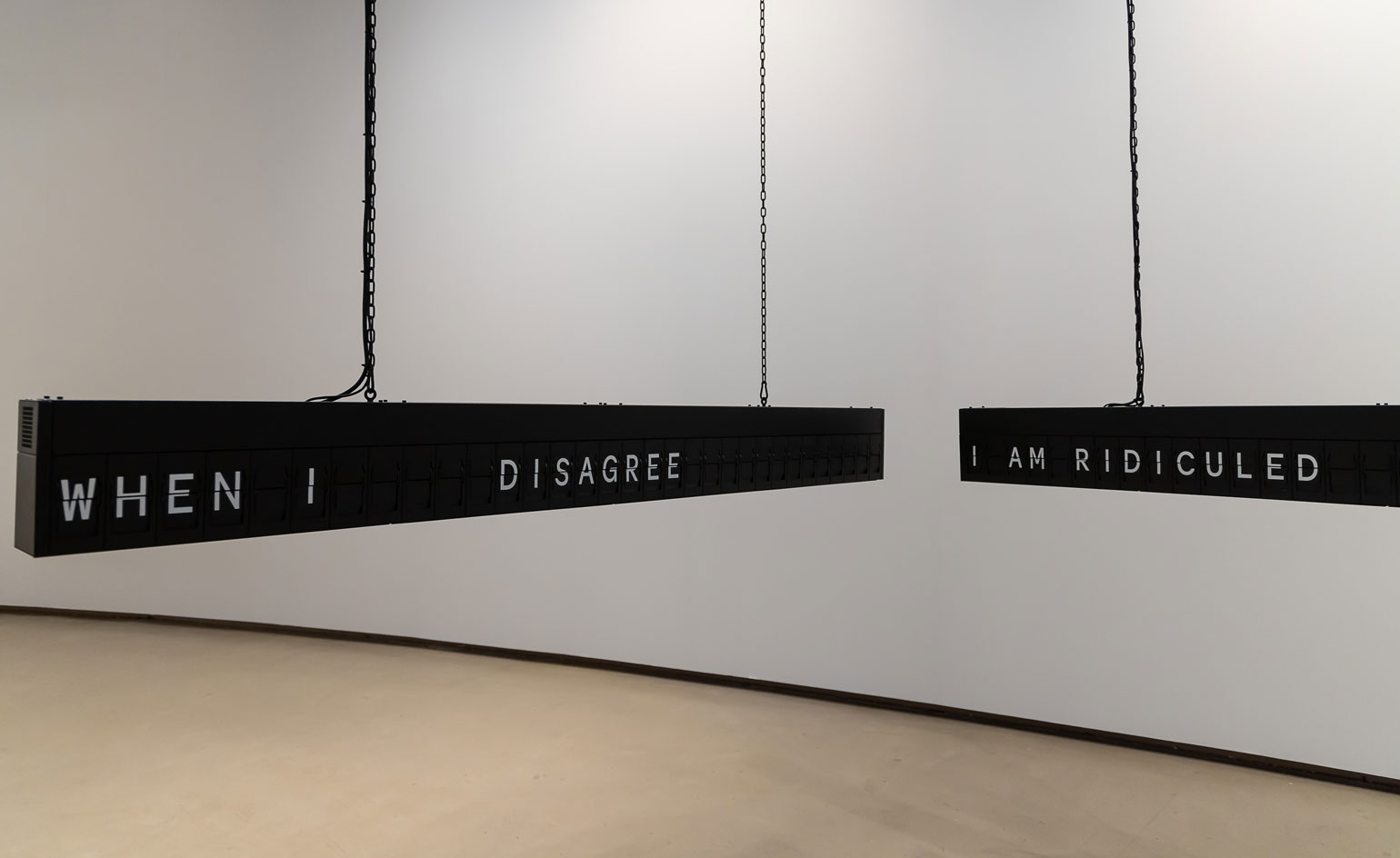
The words of Azerbaijani poet Mikayil Mushfig (1908 – 1938), labelled an enemy of the state by the Soviets, hover in the air. From a canopy of 100 low-hung microphones, a chorus clusters and repeats the poet’s statement. There is heavy breathing. Hums dissolve into whispers. Fingers click and hands furiously clap. An unpredictable rhapsody of disembodied voices darts around a dimly lit room, creating a dense fog of sounds that lingers over a field of metal spikes.
Once your senses adjust, you can edge through these spines that comprise Shilpa Gupta’s sound installation, For, In Your Tongue, I Cannot Fit (2017 – 2018). Rising up to waist height, the spears forge a constricted path. Each pierces a leaf of paper bearing fragments of the spoken verses, written by a poet incarcerated for their beliefs. It is a panoply of resistance spanning time and place, with the words of dissident writers such as Maung Saungkha from Myanmar, arrested in 2016 for his risqué claim that he had a tattoo of the president inked on his penis, melding with those of Ayat al-Qurmezi, jailed in 2011 for supposedly defaming Bahrain’s royalty.
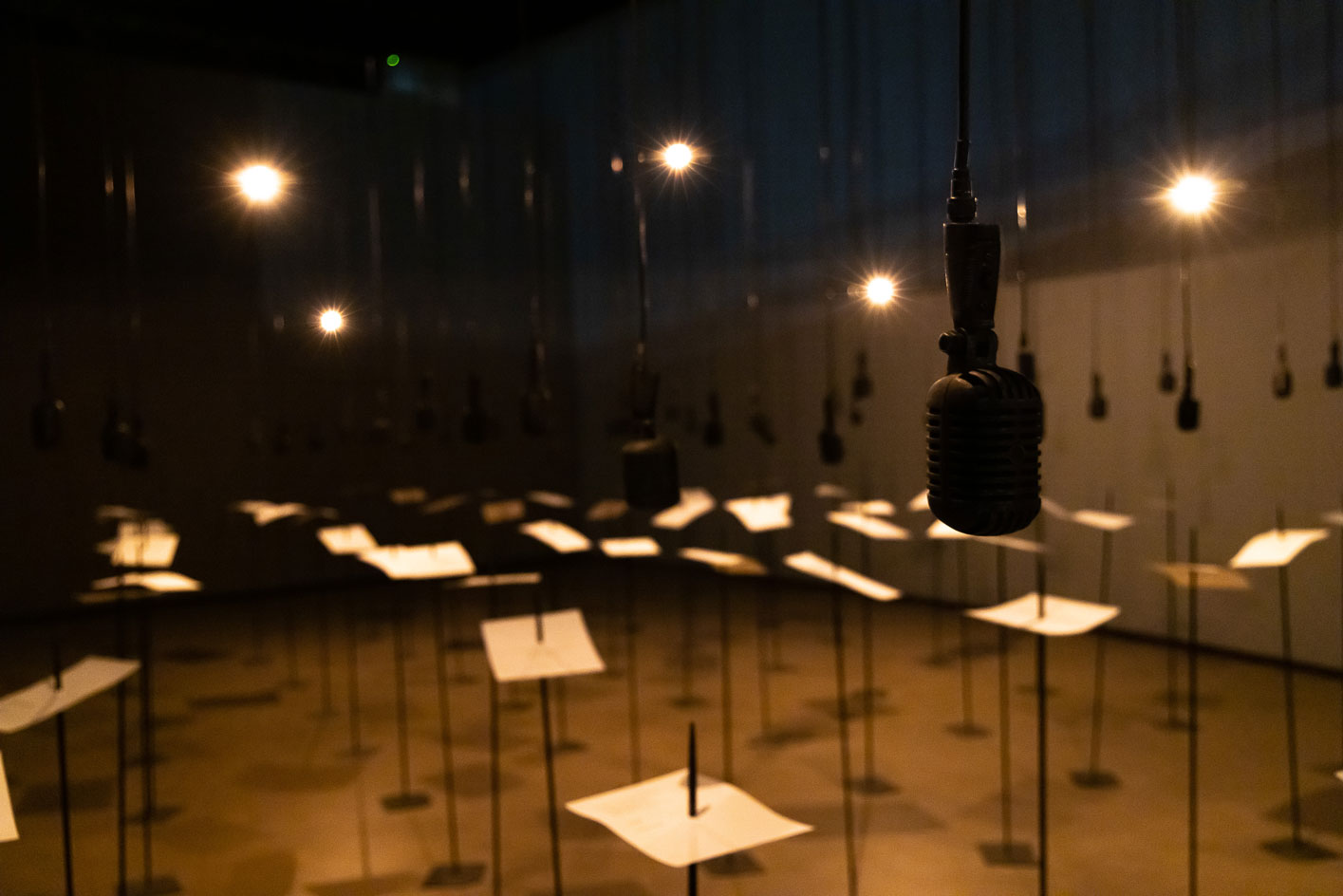
The enveloping piece is part of Gupta’s poignant exhibition ‘Sun at Night’ at the Barbican Curve. In a year when the Nobel Peace Prize has been awarded to two journalists, Maria Ressa of the Philippines and Dmitry Muratov of Russia, for their courageous advocacy and practice of press freedom, and when digital censorship is alarmingly on the rise, the show is a testament to the force of words and the fragility of our commitment to free speech.
RELATED STORY
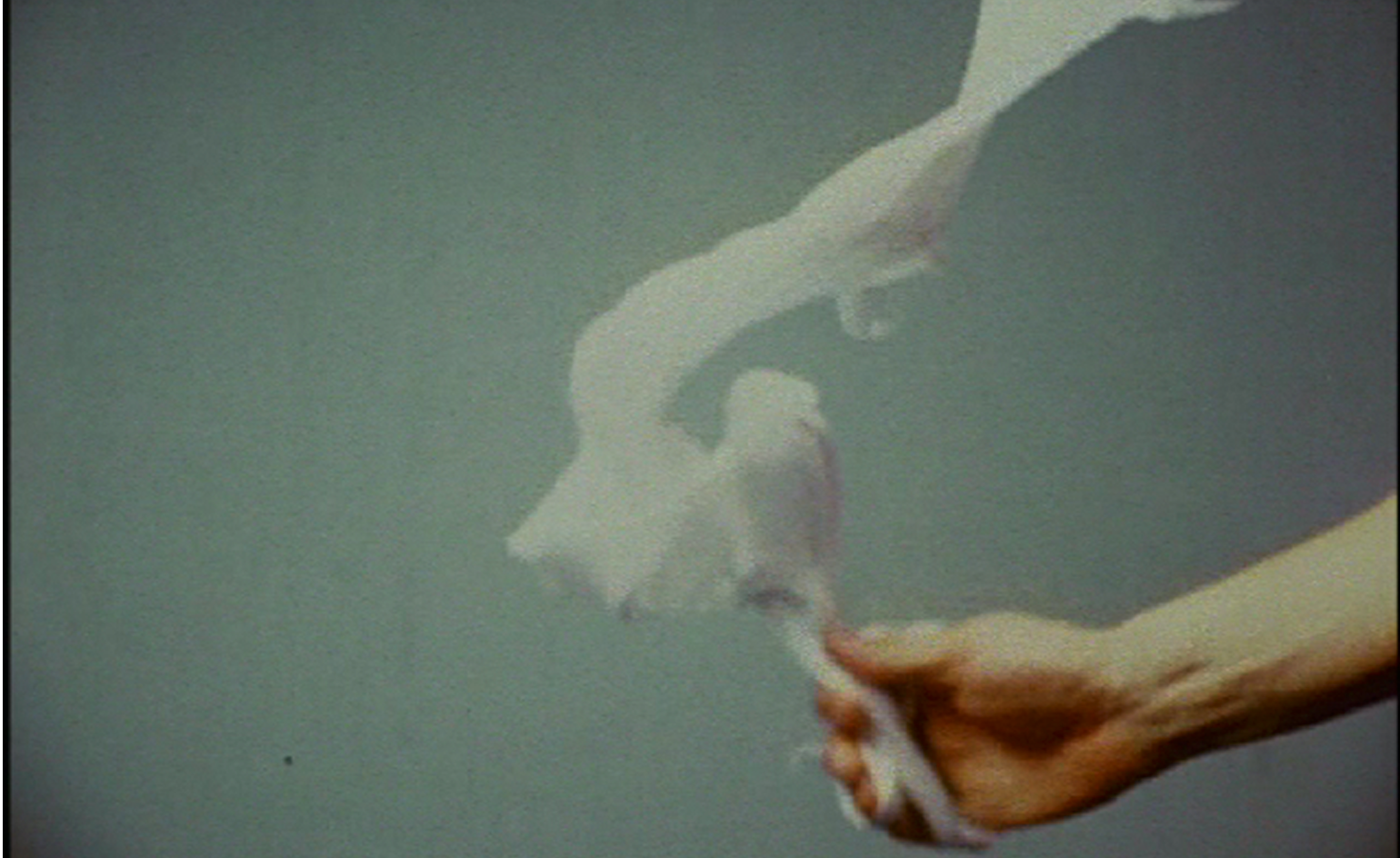
From Gavin Bond's archival photo series 'Being There'
Gupta, however, finds a refreshingly subtle way of rallying for free expression while keeping those poets at the fore. She treats their words preciously. She has ‘preserved’ the verses of censored poems by speaking them into a collection of ostensibly empty medicine bottles that form the piece Untitled (Spoken Poem in a Bottle).
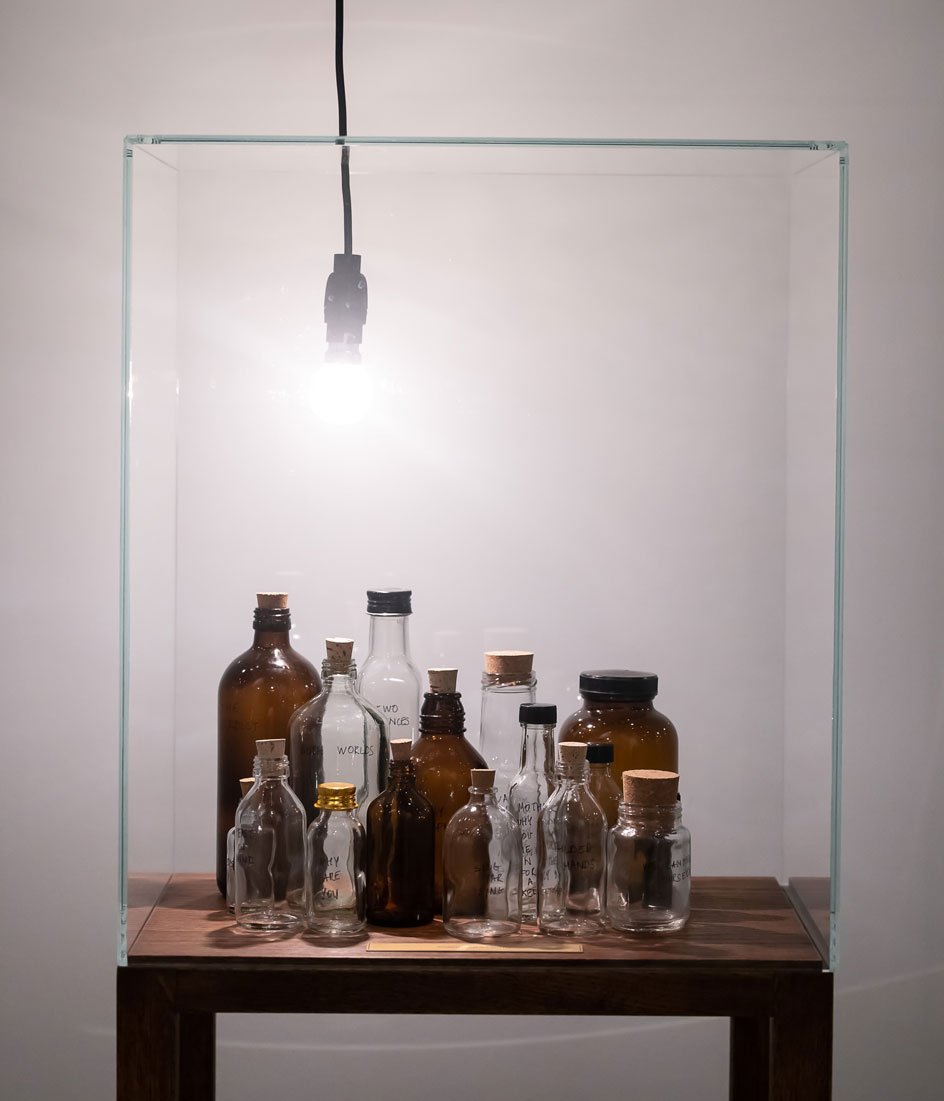
The thresholds of expression have long preoccupied Gupta. She once built a library of stainless steel books, each a replica of a title written anonymously or pseudonymously. And on the spine she explained the reasons why, capturing a range of society’s neuroses and prejudices. Gupta’s practice is characterised by its delicate investigation of social injustices and finding pathways to empathy. As she tells me, the objective of her work is ‘speaking with you and not at you and not against you. It maybe has to do with a sense of hope that a conversation might mean something.’
Come November 2021, Gupta will continue this dialogue with her first solo show at London’s Frith Street Gallery. ‘There will be spillover from the Barbican show,’ she explains, drawing a link between the genre of isolation that has been enforced throughout the world this last year. She has created a new flap-board – the kind typically associated with airport and train arrivals – that flickers through letters and settles to find our connective tissue. It spells out ‘We are closer than you ever imagined’
Receive our daily digest of inspiration, escapism and design stories from around the world direct to your inbox.
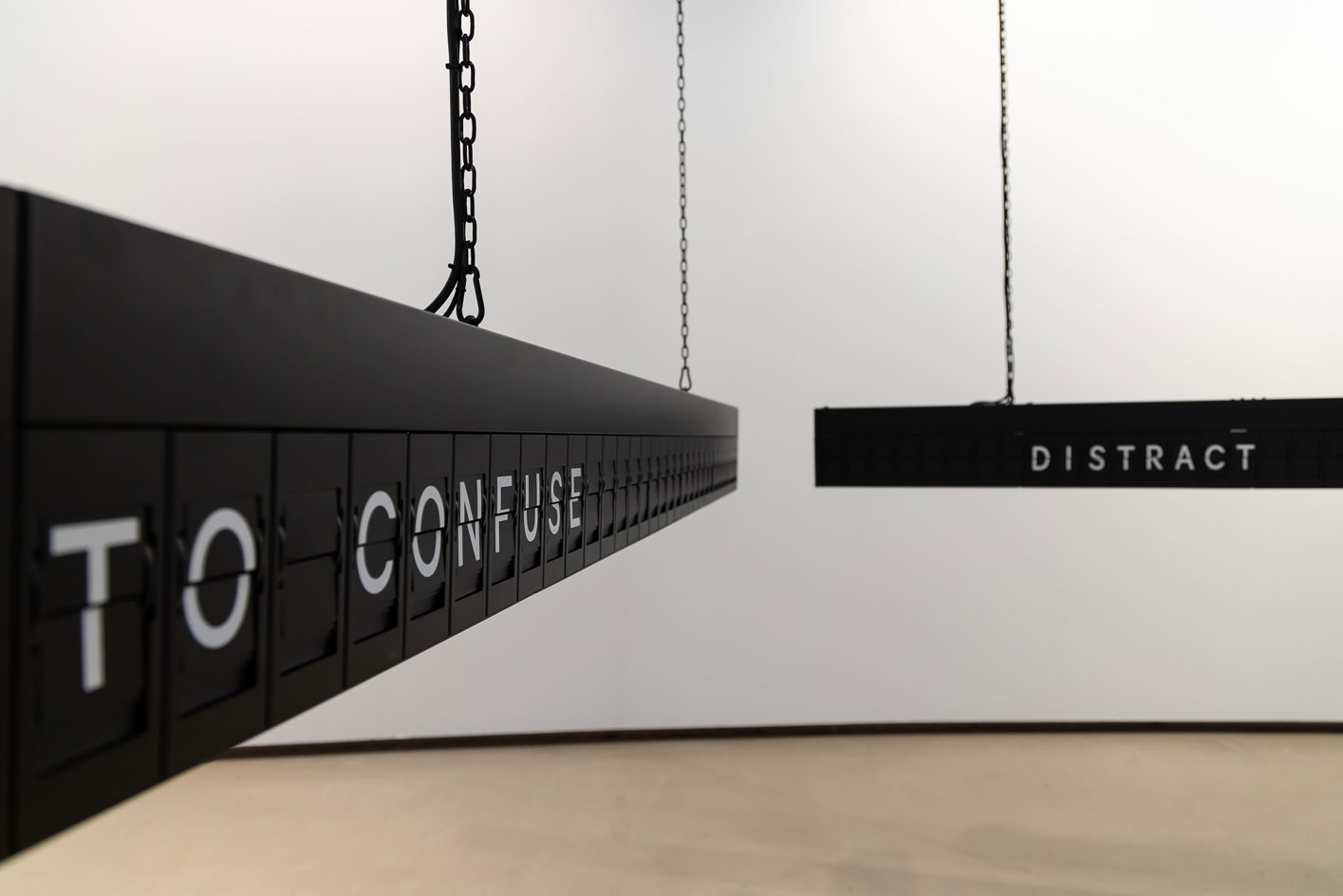
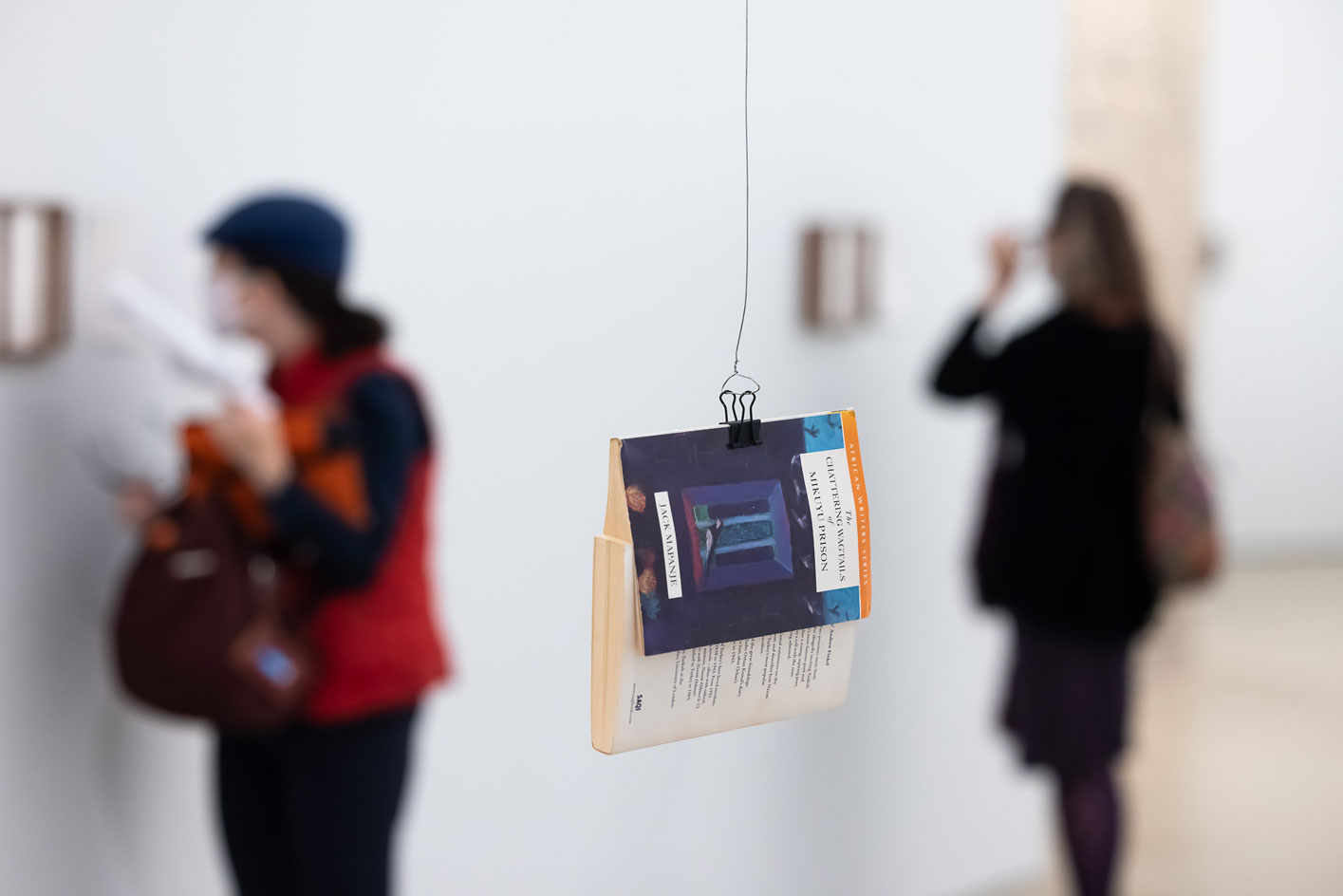
INFORMATION
Shilpa Gupta: ‘Sun at Night’, until 6 February 2022, The Curve, Barbican Centre, barbican.org.uk
-
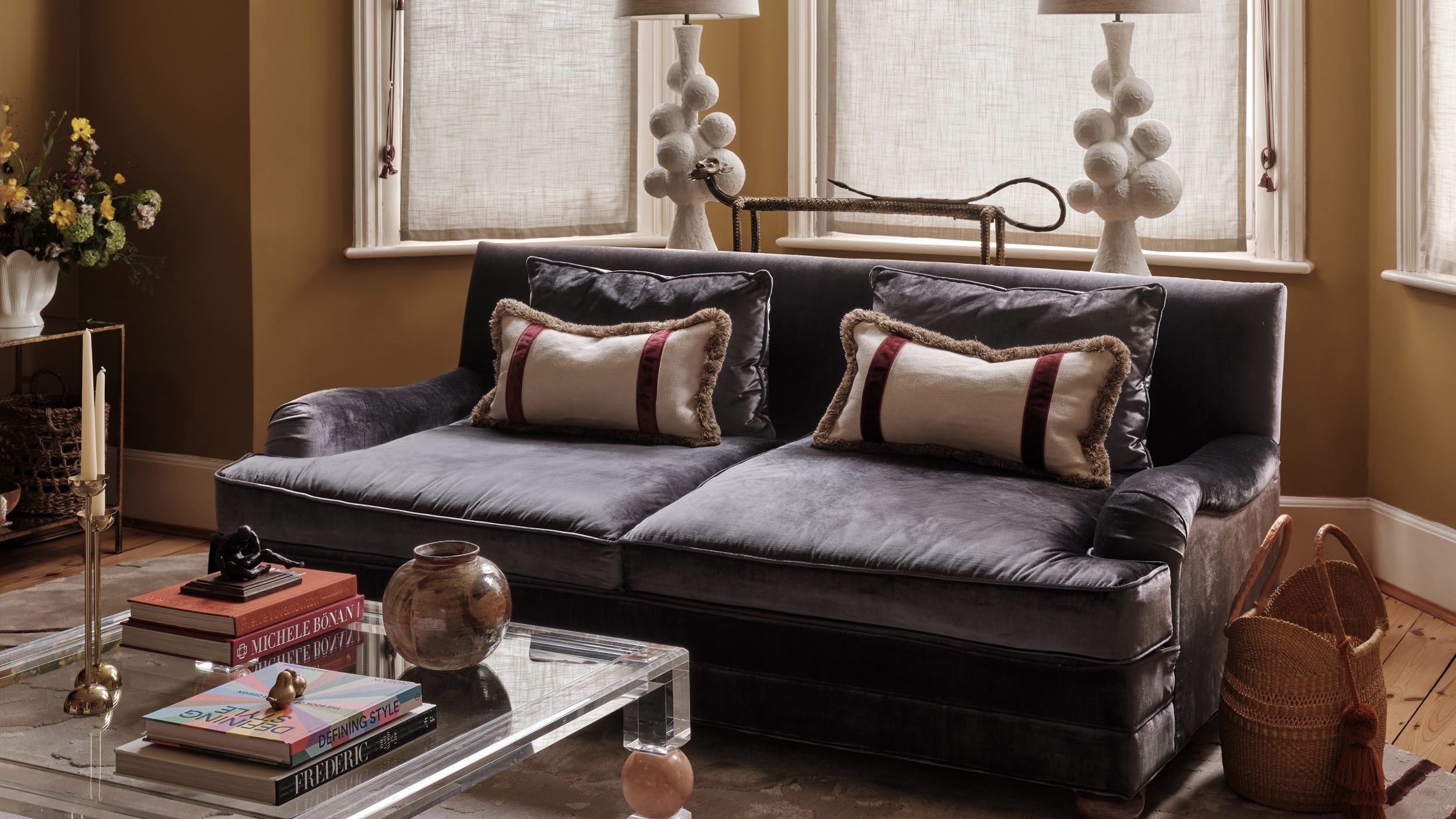 How to elevate a rental with minimal interventions? Charu Gandhi has nailed it with her London home
How to elevate a rental with minimal interventions? Charu Gandhi has nailed it with her London homeFocus on key spaces, work with inherited details, and go big on colour and texture, says Gandhi, an interior designer set on beautifying her tired rental
-
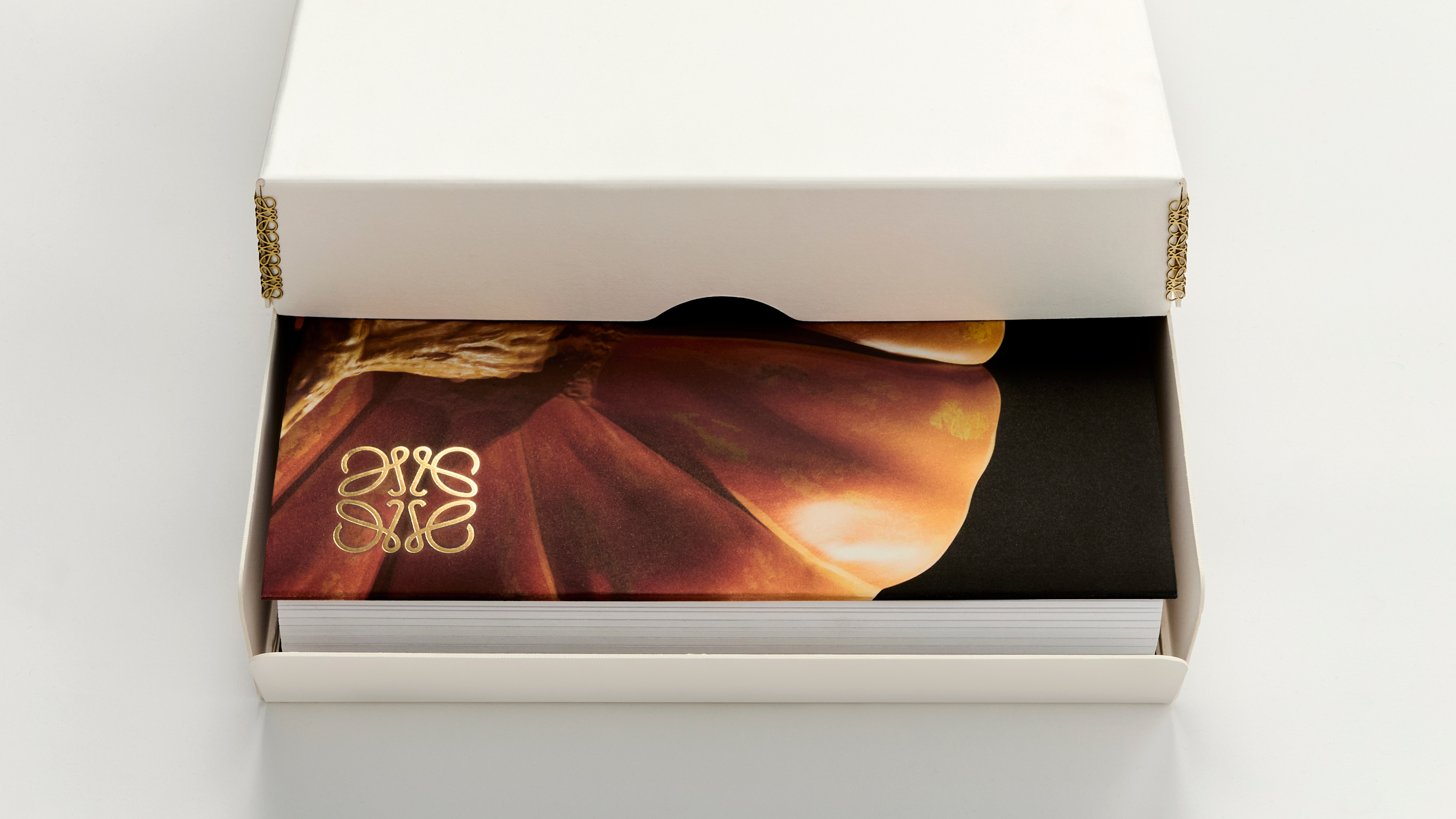 These fashion books, all released in 2025, are the perfect gift for style fans
These fashion books, all released in 2025, are the perfect gift for style fansChosen by the Wallpaper* style editors to inspire, intrigue and delight, these visually enticing tomes for your fashion library span from lush surveys on Loewe and Louis Vuitton to the rebellious style of Rick Owens and Jean Paul Gaultier
-
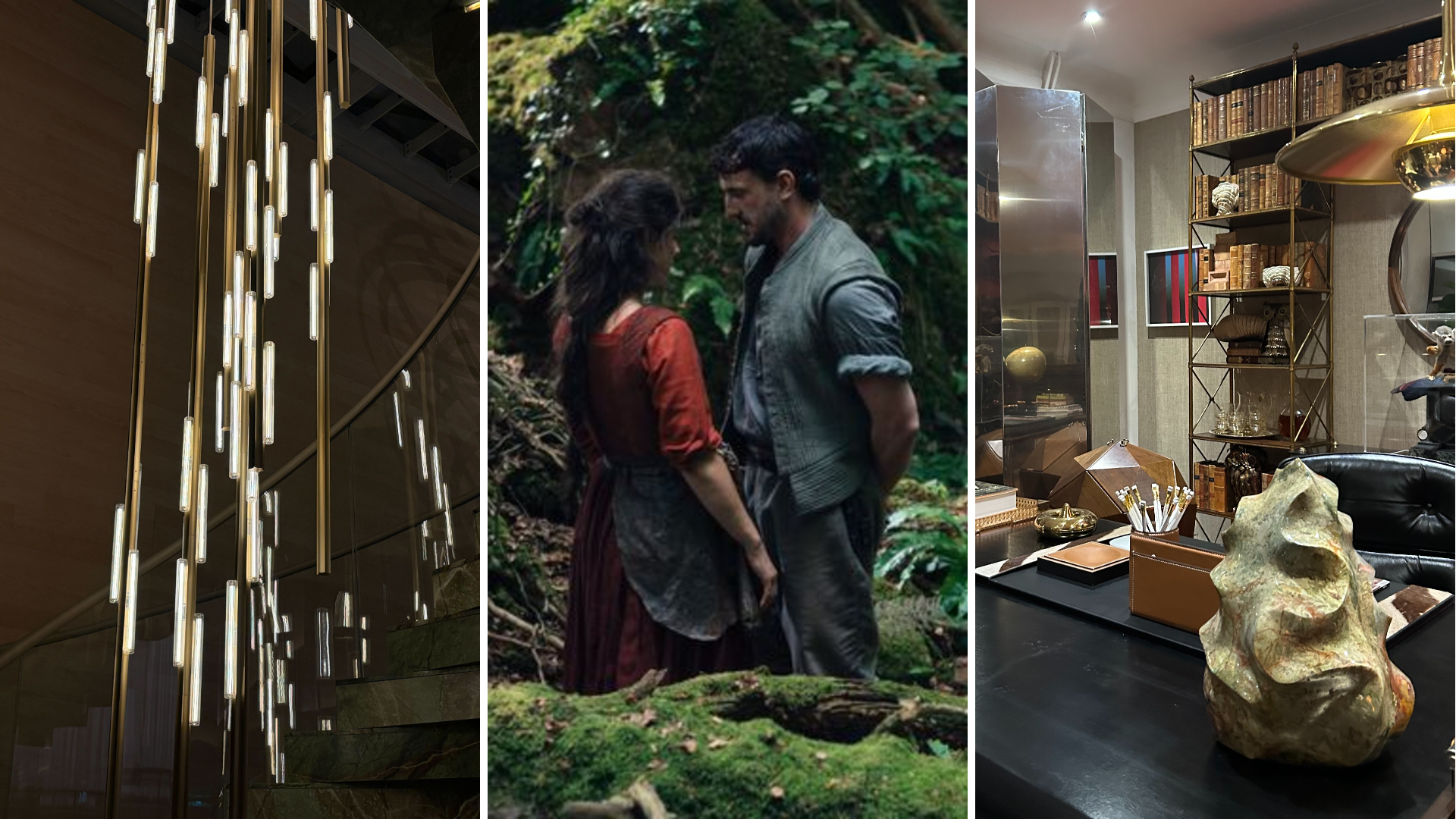 Out of office: The Wallpaper* editors’ picks of the week
Out of office: The Wallpaper* editors’ picks of the weekFar from slowing down for the festive season, the Wallpaper* team is in full swing, hopping from events to openings this week. Sometimes work can feel like play – and we also had time for some festive cocktails and cinematic releases
-
 Out of office: The Wallpaper* editors’ picks of the week
Out of office: The Wallpaper* editors’ picks of the weekFar from slowing down for the festive season, the Wallpaper* team is in full swing, hopping from events to openings this week. Sometimes work can feel like play – and we also had time for some festive cocktails and cinematic releases
-
 The Barbican is undergoing a huge revamp. Here’s what we know
The Barbican is undergoing a huge revamp. Here’s what we knowThe Barbican Centre is set to close in June 2028 for a year as part of a huge restoration plan to future-proof the brutalist Grade II-listed site
-
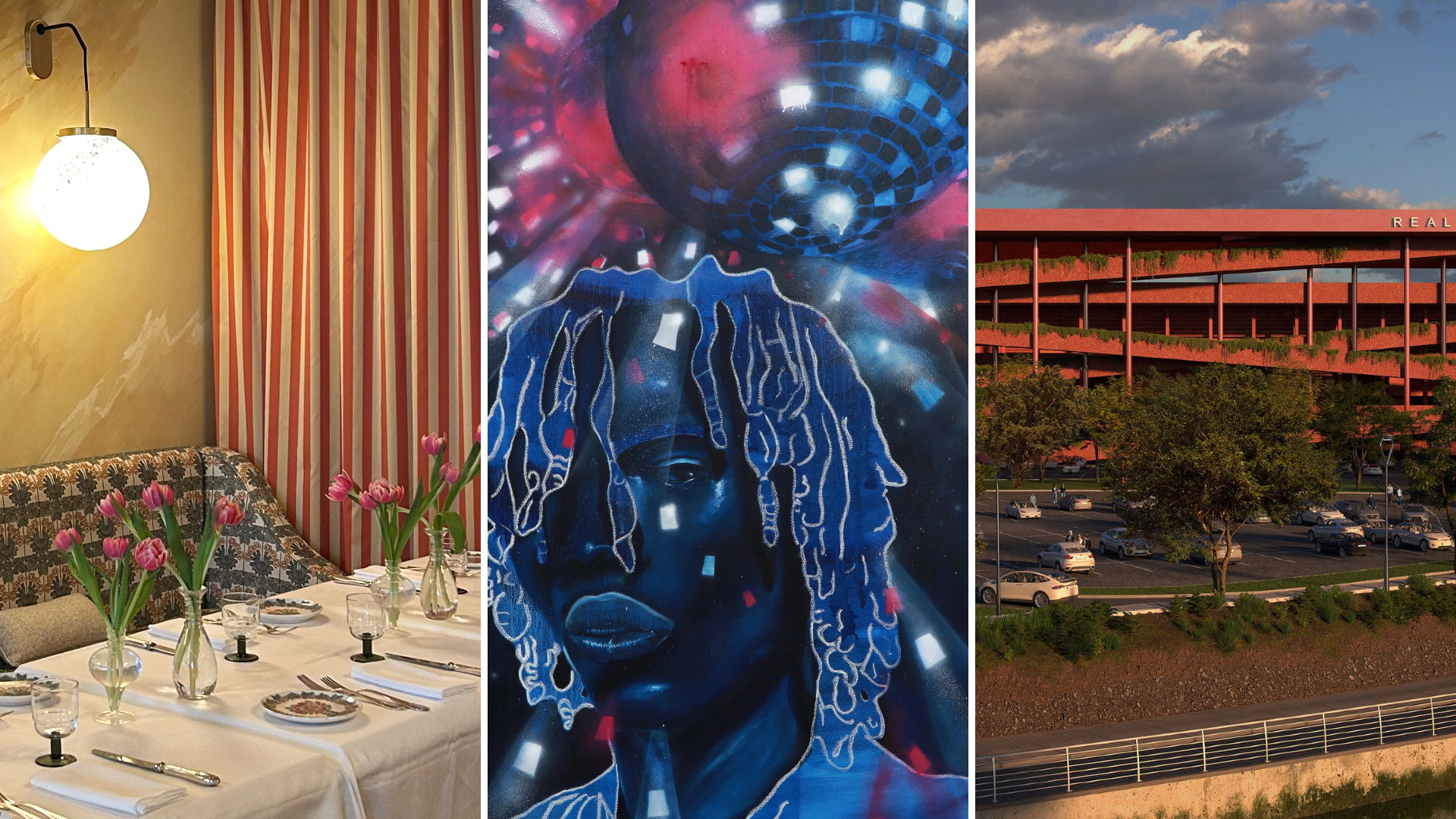 Out of office: The Wallpaper* editors’ picks of the week
Out of office: The Wallpaper* editors’ picks of the weekIt’s wet, windy and wintry and, this week, the Wallpaper* team craved moments of escape. We found it in memories of the Mediterranean, flavours of Mexico, and immersions in the worlds of music and art
-
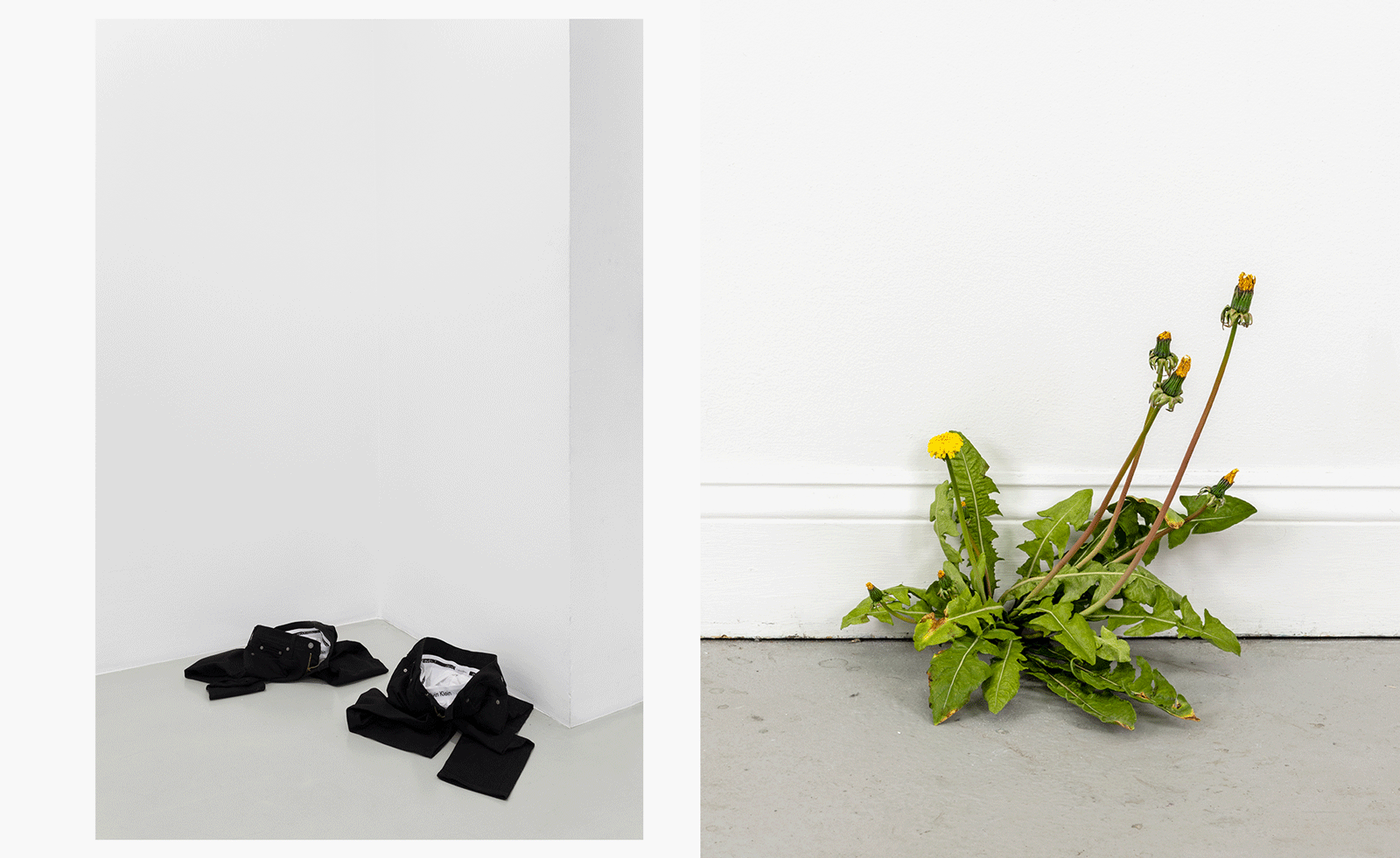 Each mundane object tells a story at Pace’s tribute to the everyday
Each mundane object tells a story at Pace’s tribute to the everydayIn a group exhibition, ‘Monument to the Unimportant’, artists give the seemingly insignificant – from discarded clothes to weeds in cracks – a longer look
-
 Out of office: The Wallpaper* editors’ picks of the week
Out of office: The Wallpaper* editors’ picks of the weekThis week, the Wallpaper* team had its finger on the pulse of architecture, interiors and fashion – while also scooping the latest on the Radiohead reunion and London’s buzziest pizza
-
 Out of office: The Wallpaper* editors’ picks of the week
Out of office: The Wallpaper* editors’ picks of the weekIt’s been a week of escapism: daydreams of Ghana sparked by lively local projects, glimpses of Tokyo on nostalgic film rolls, and a charming foray into the heart of Christmas as the festive season kicks off in earnest
-
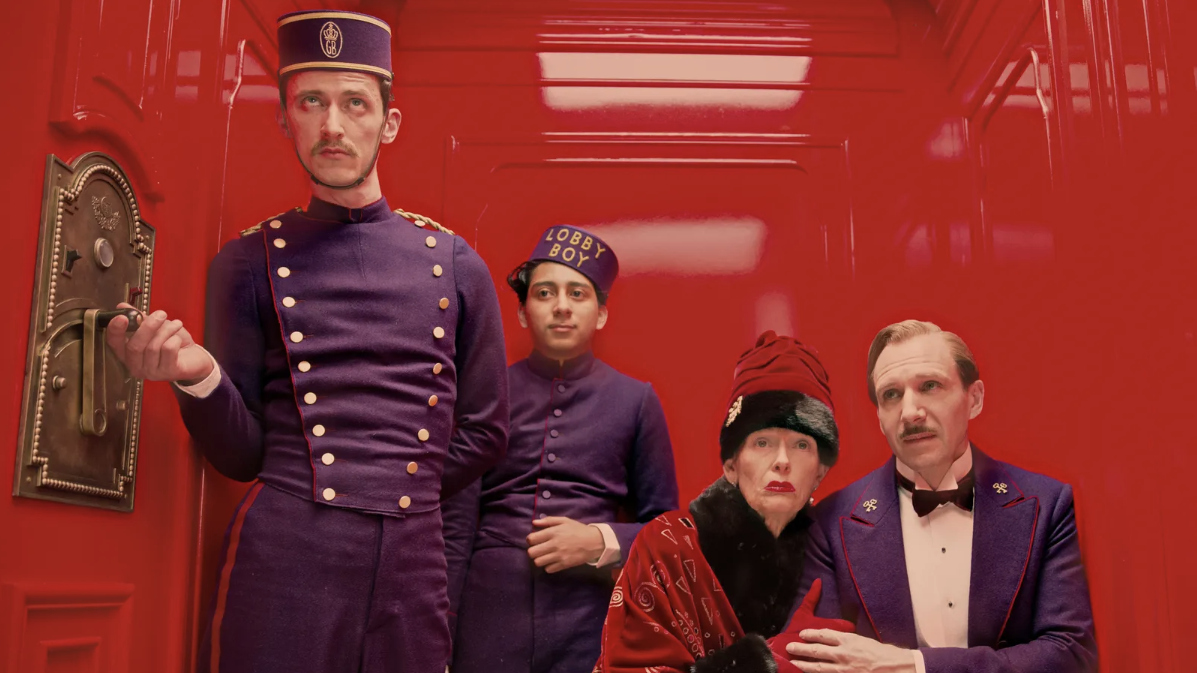 Wes Anderson at the Design Museum celebrates an obsessive attention to detail
Wes Anderson at the Design Museum celebrates an obsessive attention to detail‘Wes Anderson: The Archives’ pays tribute to the American film director’s career – expect props and puppets aplenty in this comprehensive London retrospective
-
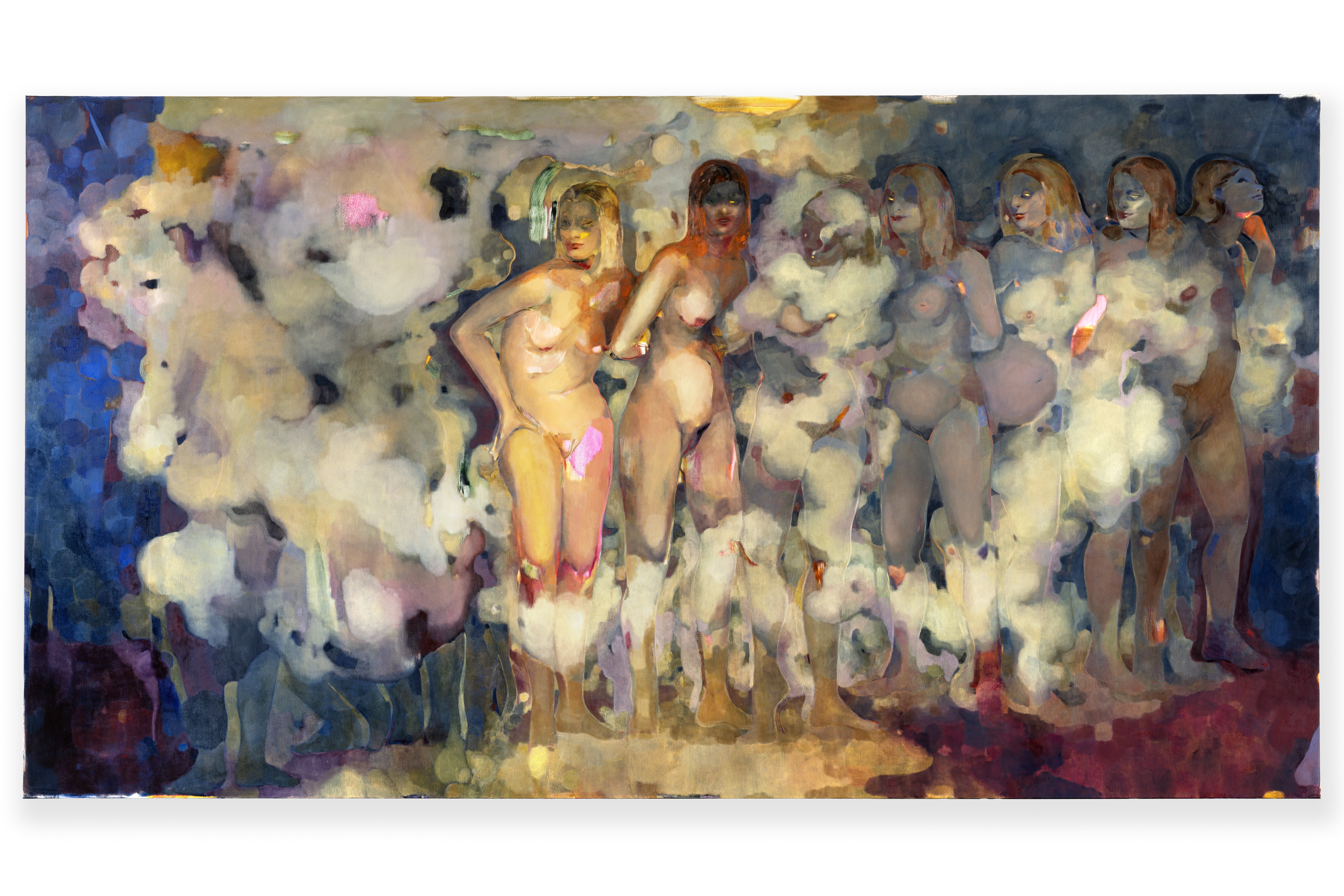 Meet Eva Helene Pade, the emerging artist redefining figurative painting
Meet Eva Helene Pade, the emerging artist redefining figurative paintingPade’s dreamlike figures in a crowd are currently on show at Thaddaeus Ropac London; she tells us about her need ‘to capture movements especially’